#Parsch
Explore tagged Tumblr posts
Text
Lesen, Lernen, Schauen: Weihnachtsempfehlungen, Teil II
Sezession:»Nach Ellen Kositza, die hier ihre drei Weihnachtsempfehlungen aussprach, bin nun ich an der Reihe. Ich beschränke mich in diesem Jahr auf zwei Bücher: Lesen und Schauen Ich nenne inzwischen eine kleine Sammlung von vorkonziliaren deutschen Bibelübersetzungen mein eigen: diejenigen von Riessler/Storr und von Pius Parsch, die „Pattloch“-Bibel (Hamp/Stenzel/Kürzinger) und die alte Herder-Bibel. Die viertausend […] http://dlvr.it/SzQPbk «
0 notes
Text
Wausau area obituaries August 21, 2023
Obituaries are a community service courtesy of Helke and Brainard Funeral Homes.
Obituaries are a community service courtesy of Helke and Brainard Funeral Homes. Lorence H. Parsch Jr. Lorence “Larry” Parsch Jr, 84, of Rib Mountain, passed away, unexpectedly at home, on Wednesday, August 16, 2023. He was born on October 26, 1938, to the late Lorence Sr. and Betty (Muelbeck) Parsch in Wausau, Wisconsin. Larry was a charter member of the Rib Mountain Lutheran Church; he…

View On WordPress
0 notes
Text
Cyanobacteria bind metals
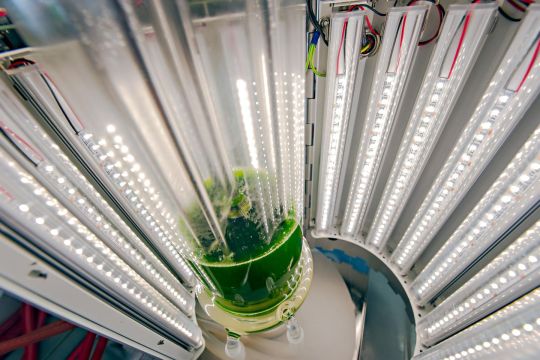
In photobioreactors like this one, the researchers produce biomass of the cyanobacteria strains they are investigating
They are in demand worldwide, but their extraction is only worthwhile in a few places on earth. A German study shows that bacteria can bind rare earth metals. Is there a path to the circular economy?
Several strains of cyanobacteria can bind to rare earth metals. In some strains, the adsorbed metals make up to ten percent of the dry matter of the microorganisms, reports a German research team led by Thomas Brück from the Technical University of Munich in the journal Frontiers in Bioengineering and Biotechnology[1]. The discovery could enable a biotechnological recycling process for rare earths.
Mobile phones, cameras, electric motors, wind turbines and lamps - these are just a few of the products for which rare earth metals are used. These 17 metals[2] have extraordinary electromagnetic, catalytic and optical properties. However, there are only a few deposits worldwide where the mining of rare earths is economically worthwhile. In addition, the extraction of the metals is often environmentally harmful and large amounts of waste are produced. Therefore, scientists are looking for ways to recycle rare earth metals.
In the future, cyanobacteria could be used to recover rare earth metals
Cyanobacteria, formerly incorrectly called blue-green algae, are known to bind metals to them. Brück and colleagues conducted their experiments with four known laboratory strains and eight other strains isolated from their natural environment. They all originally come from habitats with extreme environmental conditions, such as natron lakes in Chad, deserts in Namibia, crevices in South Africa or polluted streams in Switzerland.
"These cyanobacteria could be used in future environmentally friendly processes for the recovery of rare earth metals and for the treatment of industrial wastewater at the same time," Brück is quoted as saying in a statement from the specialist magazine.
The scientists exposed the bacterial cultures to an aqueous solution containing the rare earth metals lanthanum, cerium, neodymium and terbium. Five strains showed interesting binding properties. In nature they live under very different conditions and come from different orders, but they have one thing in common: They produce large amounts of so-called extracellular polymeric substances (EPS)[3], which result in a biofilm.
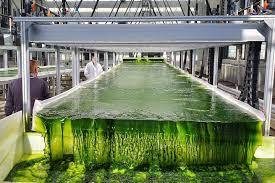
Efficient processes for the production of biokerosene and chemical recyclables from algae are being researched in the TUM Algen Technikum
A commercial recycling process could be developed from the research
Experiments with different pH values indicate an electrochemical binding mechanism associated with this biofilm. "The biomass from cyanobacteria has a high proportion of sugar compounds that carry negative charges. These attract positively charged metal ions, which are then bound to the biomass," explains lead author Michael Paper from the Technical University of Munich in a statement from the university.
Cyanobacteria of the genus Nostoc[4] brought the highest yield with 84.2 to 91.5 milligrams of metal per gram of biomass. An advantage with regard to a biotechnological process is the fact that the reaction proceeds very quickly: in experiments with cerium, most of the metal was already bound to the biomass in the first five minutes.
The scientists also investigated possible problems: If, for example, lead or aluminum are present in the aqueous solution[5], then they are bound to the cyanobacteria more efficiently than the rare earth metals. But Brück is confident that a commercial recycling process can be developed from the research. A major advantage is that the binding mechanism is reversible: "That means we can wash out the metals and reuse the biomass." In this way, a true circular economy could emerge.
Source
Stefan Parsch, dpa, Cyanobakterien binden Metalle, in: Süddeutsche Zeitung, 28-2-2023, https://www.sueddeutsche.de/wissen/bakterien-seltene-erden-1.5760015
[1] Michael Paper, Max Koch, Patrick Jung, Michael Lakatos, Tom Nilges, Thomas B. Brück: Rare earths stick to rare cyanobacteria: Future potential for bioremediation and recovery of rare earth elements, in: Front. Bioeng. Biotechnol., 28 February 2023, Sec. Bioprocess Engineering, Volume 11 – 2023
[2] The 17 rare earth elements are: lanthanum (La), cerium (Ce), praseodymium (Pr), neodymium (Nd), promethium (Pm), samarium (Sm), europium (Eu), gadolinium (Gd), terbium (Tb), dysprosium (Dy), holmium (Ho), erbium (Er), thulium (Tm), ytterbium (Yb), lutetium (Lu), scandium (Sc), and yttrium (Y).
[3] Extracellular polymeric substances (EPS) are organic polymers of microbial origin involved in bacterial cells' interactions with their environment. EPS are comprised of polysaccharides, proteins, extracellular DNA (eDNA), and lipids.
[4] Nostoc, also known as star jelly, troll’s butter, spit of moon, fallen star, witch's butter (not to be confused with the fungi commonly known as witches' butter), and witch’s jelly, is the most common genus of cyanobacteria found in various environments that may form colonies composed of filaments of moniliform cells in a gelatinous sheath of polysaccharides. Nostoc is a genus of photosynthetic, Gram-negative cyanobacteria that can be found in both terrestrial and aquatic environments.
[5] An aqueous solution is a solution in which the solvent is water. It is mostly shown in chemical equations by appending (aq) to the relevant chemical formula. For example, a solution of table salt, or sodium chloride (NaCl), in water would be represented as Na+(aq) + Cl−(aq). The word aqueous (which comes from aqua) means pertaining to, related to, similar to, or dissolved in, water. As water is an excellent solvent and is also naturally abundant, it is a ubiquitous solvent in chemistry. Since water is frequently used as the solvent in experiments, the word solution refers to an aqueous solution, unless the solvent is specified.
0 notes
Text
Monday 31 December 2001 - The Mozart Houses across the Salzach - View from the Castle - Ride to Parsch - the new coins and bills - long walk back
Hi everyone! Grüezi mitenand! Hallo allerseits! Üdv mindenkinek! Ahoj všetci!
Twenty years ago today, was the last day that the Euro was only a concept of the member states of the European Union and would be available as a hard physical currency a day later. I wanted to visit Salzburg that day and evening.
I woke up about 7:30 AM, went to breakfast and had some coffee, bread rolls, cheese and sliced meats. The "orange juice" tasted more like apricot as it was too clear to be orange. I went upstairs to take a shower. Before that, I took out my Peter Kraus CD and portable CD player, and hooked it up to the camera's sound input. I recorded the snowfall outside my window while playing "Sugarbaby" as in the title song for the 1985 film by Percy Adlon starring Marianne Sägebrecht. About 8:30 AM I walked to the Egger-Lienz-Straße bus stop (officially called “Herrnau”) to take bus line 51 into downtown. The ticket machine was still quoting fares in Austrian Schilling. A day pass for Salzburg itself cost ATS 40.00, which was about 5.60 D-Mark or 2.80 Euro. I already had a Salzburg-Card, so buying a new ticket would have been superfluous.
The bus took me to Mozartsteg where I crossed the Salzach, walked along Rathausplatz to the Getreidegasse, and the familiar yellow house that clearly stated "Mozarts Geburtshaus", or Mozart's Birth House. It was open that day since 9 AM so I went inside. My Salzburg Card allowed me a free entry - per https://mozarteum.at/museums/mozarts-geburtshaus/: "Hier wird die Salzburg Card akzeptiert.". Flash photography was not allowed, neither was videotaping: "Fotografieren ist nur OHNE BLITZ erlaubt, Filmen ist NICHT erlaubt.". Too bad my cellphone at the time, a Siemens S40, did not have a camera. The house was six stories high on top of a grocery store (latest Google Maps image shows that it is a Spar grocery store). Access to the paying public is available only for four of those floors. Inside the house were many rooms with family portraits, some instruments and many stories of the family and Salzburg in the 18th century AD. On the fourth floor, there are mentions of Mozart after he was married and started his own family. There was another house that the Mozarts occupied, formerly referred to as the "Tanzmeisterhaus", and that was across the Salzach at Markatplatz, only one street away from the current location of the Salzburg location of the Hotel Sacher. Admission was complimentary with the Salzburg Card but an audio guide rental cost 30 Schilling / 2.20 Euro or so. The house was shorter but wider. This was the Mozart family's second home in 1773 after moving out of the older house at Getreidegasse, when Mozart was employed as a court musician by Prince-Archbishop Hieronymus Colloredo, noted as the last Prince-Archbishop when the bishopric became secularized. It seemed that only the third floor was accessible, the others were part of the museum's administrative office complex. Much of the house exhibits focused on Mozart's father Leopold and older sister Nannerl. There was not much to the Tanzmeisterhaus as I had hoped. So I crossed the Marko-Feingold-Steg to downtown and buy some groceries to make a sandwich.
It was a good thing that I went to the grocery store, namely the Billa store at Griesgasse 19 which was open until 8 PM, and the next day it would be closed until Wednesday about 6 AM. I was able to buy some bread, some cheese and sliced meat like mortadella with mushrooms, as well as some Almdudler that tasted like sweet carbonated green tea, the same that I enjoyed in Summer 1998 when visiting a few times before. After having lunch, I walked around the Domquartier and Mozartplatz along to Festungsgasse. With my Salzburg Card, I took the Festungsbahn cable car for free to the top of the Festung Hohensalzburg castle. There are a few towers on the castle, and I would make a counterclockwise walk starting with the Geyerturm that faces the south, then Trompeterturm, St. Georgs Kirche and the Glockenturm. At the Geyerturm, I was able to observe the traffic at the Erzabt-Klotz-Straße and Petersbrunnstraße, even seeing the signal aspects. I did not stay long. I moved on to the Trompeterturm, passed the St. Georgs Kirche and spent a few minutes looking westward across the Salzach, I think it was 3 PM by then. Much of Salzburg was covered in snow, and I was thinking about a few time zones farther east, for example Hong Kong and Japan, which might already be celebrating the new year. It had started to snow very lightly so I took the cable car back down - that ride was complimentary with the Salzburg card.
After the Festungsbahn ride, I walked to Rudolfskai and boarded a bus line 6 to go to Parsch. For some reason, since June 1997, I always enjoyed the ride to Parsch above anything else on the Salzburg trolleybus network. To be specific, the terminus is at Ludwig-Schmederer-Platz where there is a loop for the bus to turn around on Gaisbergstraße, as opposed to the commuter railway station Parsch. I walked a few streets from the Ludwig-Schmederer-Platz to Maria-Cebotari-Straße and then Joseph-Messner-Straße. I sat down and watched the snow fall, and gather on my jacket sleeve. I could see the snowflake pattern about a quarter inch long, around 7 mm. Each one was different. I took the bus back to Mozartsteg and Rudolfskai to connect with line 51 and return to the hostel. I needed to rest before supper and the New Years Eve celebrations at Mozartplatz.
About 6:30 PM I woke up from my nap. I had to make sure my camera batteries were fully charged. After supper I took the bus 51 from Egger-Lienz-Straße to Mozartsteg. I walked through the old town along Getreidegasse and back by Universitätsplatz. Although there was a kiosk that would sell Euro coins, they would not be able to open until 10 PM that night. I had to stand outside for a few hours and enjoy the ice skating at Mozartplatz, either that or walk up the Sigmund-Haffner-Gasse and back. I found also another street to walk along, across the Staatsbrücke to Platzl, Linzer Gasse and Franz-Josef-Straße. Then I went back to Mozartplatz about 11 PM, had some Glühwein and watched the nice animated graphics on the Dom zu Salzburg prior to the fireworks going off at midnight. Along the way I was able to buy a starter kit of Euro coins, for 200 Schilling, worth a total of 14.54 Euro. It had samples of all the Austrian Euro coins, from the 1 cent to the 2 Euro coin. 1 Euro was worth 13.76 legally. The coins would be a better deal than the notes, coins being at the rate of 13.76 Schilling, and the notes at 14.28 Schilling. The notes could not be bought until after midnight anyway.
About 11:59 PM the countdown started to New Years' Day. Mozartplatz and Residenzplatz were full of people, some drinking Glühwein, others drinking coffee, cocoa or hot tea, anxious to get their hands on the new currency. The clock struck midnight and the crowd cheered, and many fireworks were lit up. About ten minutes later the kiosks opened up again to sell the 500 Schilling starter kit for the banknotes, just a five, a ten and a twenty Euro in each kit. I was really happy to at least see the notes. The notes in 2022 have since been reissued as more countries joined the Eurozone, but for their time, they were quite advanced. And immediately they could be used as cash payment. What would happen to the older currencies that preceded the Euro? There would be a month transition. Certain machines that took coins as payment would take some time to change from the older currencies to Euro.
I guess I missed the last bus to the Egger-Lienz-Straße / Herrnau stop from Rudolfskai, either that or there would not be another one for another hour. It was very cold so I decided to walk the entire distance from Rudolfskai past the state court buildings on to Alpenstraße and follow the trolleybus line that way, and turn whenever I see the Julius Meinl coffee shop. I must have returned to the hostel about 3 AM. I was too tired to celebrate anymore, so I went to bed. And I had maybe 49.54 Euro in cash, not a bad start to the year.
Tomorrow, I end up as the first and maybe only person to arrive in time for breakfast, take my first journey of the year on ÖBB to Linz, buy a tram ticket in Euro, relax at Maxglan, walk across the Salzach, ride the Salzburg Lokalbahn and have supper at the hostel.
Hope you will join in tomorrow’s adventure!
Ich hoffe, Ihr nehmt am morgigen Abenteuer teil!
Remélem, csatlakozol a holnapi kalandhoz!
Dúfam, že sa zapojíte do zajtrajšieho dobrodružstva!
#Salzburg#Mozart Geburtshaus#Mozart Wohnhaus#Sacher#Hotel Sacher#Sacher Torte#Festung Salzburg#Festungsbahn#Billa#Schilling#Euro#Startpaket#Mozartplatz#Residenzplatz#Rudolfskai#Egger-Lienz-Straße#Obus#trolleybus#Alpenstraße#Parsch#Luwdig-Schmederer-Platz
1 note
·
View note
Text
Nature's annual cycle is characterized by two phenomena: light and life. Out of the darkness of night comes light; out of death comes life. The transition from night to light characterizes the winter season; the transition from death to life is proper to summertime. The holy year of the Church is likewise divided into two phases which have similar characteristics: [Advent and Lent]. In other words, nature and the mysteries of our salvation coincide.
Doctor Pius Parsch
#doctor pius parsch#this is so beautiful#lent#advent#the plan of salvation#this is why i love being catholic#the beauty of nature#light#life#the church#liturgical seasons
4 notes
·
View notes
Text

0 notes
Text
New Horizons Computer Learning Center Has a New Partner in Dallas-Fort Worth
New Horizons Computer Learning Center Has a New Partner in Dallas-Fort Worth
New Horizons Dallas offers training and certifications in a variety of subjects critical to the success of today’s IT departments and individual IT professionals Press Release – updated: Jul 20, 2021 DALLAS, July 20, 2021 (Newswire.com) – New Horizons Computer Learning Centers is excited to announce its new franchise location opening, New Horizons Dallas. New Horizons has partnered with IT…
View On WordPress
#Axelos#Big Data#cisco#Cloud Computing#CompTIA#cyber security#Dean Kothia#IT Service Management#Microsoft#Mikell Parsch#Networking#New Horizons Computer Learning Center#New Horizons Dallas#project management#vmware
0 notes
Photo


AN ENGRAVED GLASS OENOCHOE EWER 19th century Signed F. Parsche, depicting a Hunt scene surrounded by branches and acorns. height 13in (43cm)
(via)
0 notes
Text
‘The Church’s Year of Grace’
The more I research about Liturgical Living, the more I’m humbled and wide-eyed at the vast amounts of knowledge, symbolism and tradition we have in the Catholic Church.
I happened upon a simple, but beautiful book cover while I was browsing Amazon for liturgical year books. Written by a priest, Pius Parsch, he wrote a 5-volume series in the 1950s detailing the Church’s year.

Unfortunately, the book is out of print. I did happen to find a digital copy of it on Archive.com, which we can check out the book for an hour at a time.
Below is the book’s excerpt for today:

A few of the other volumes can be following this search result for Pius Parsch, 1884-1956.
#catholic#liturgical living#liturgical year#catholicism#catholic book#lent#lent 2022#catholic church#sacred tradition#Yours Truly
5 notes
·
View notes
Note
I'm not an Egyptologist but I don't think brain extraction via the nasal cavity is a myth. Pirsig et al. Confirmed that it was indeed possible (Pirsig, W., Parsche, F. Instruments for transnasal brain removal during embalming by the ancient Egyptians. Int. J. Anthropol. 6, 67–74 (1991)
Oh no, that’s definitely a fact! I think the question was whether or not scientists had confirmed that is *wasn’t* done with a red hot poker.
2 notes
·
View notes
Photo

The evangelist Luke is symbolized by an ox. The sacrifice of oxen prefigured the sacrifice of our Redeemer on the Cross. Luke begins his Gospel with the account concerning Zacharias and Elizabeth, who when well advanced in years became the parents of St. John the Baptist. Luke is associated with an ox because he combines so perfectly the two horns (the two Testaments) and the four hoofs (the four Gospels). - from The Church’s Year of Grace by Dr. Pius Parsch
74 notes
·
View notes
Text
HOMILY for Passion Sunday (Dominican rite)
Heb 9:11-15; John 8:46-59
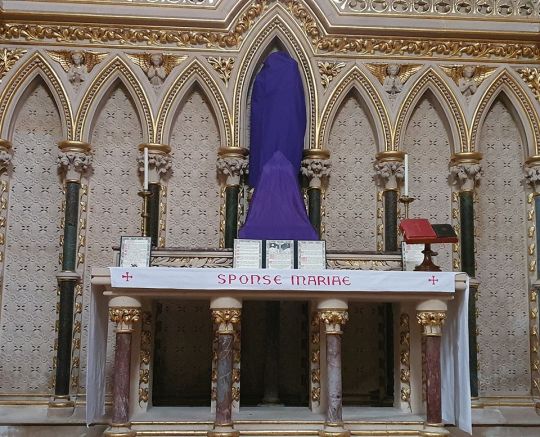
From Septuagesimatide, to Lent, and now to Passiontide: we have entered the third and final phase of our preparation for the Easter festival. The Crosses and sacred images have now been veiled in church, a further deprivation of the senses in this holy time of fasting and abstinence. But this year, Passiontide is truly, for all of us, as the name indicates, the time of suffering, and deprivations and the strangest of abstinences have been forced upon us: we have been deprived of access to our churches, deprived of the sacraments in some cases, and a prolonged Eucharistic fast, an abstinence from sacramental communion is the yoke placed upon us. This is the passion, the spiritual suffering, that many Catholics now undergo. And, moreover, there are the temporal sufferings of the whole world from sickness and death and the far-reaching effects of this pandemic that strike at us physically, socially, materially, and psychologically. Truly, this is a Passiontide, a time of suffering for all of humanity, that will extend beyond this fortnight of liturgical veiling.
How shall we respond, as Christians? “Stat crux dum volvitur orbis” say the Carthusians. “The Cross stands steady while the world spins”. Hence this liturgical time of Passiontide directs our attention to the Cross. The readings of this Passion Sunday Mass focusses us on the suffering and perfect sacrifice of Jesus Christ. The Liturgy today points us to the Sacrifice of the Mass itself, whereby Christ’s Cross is once again exalted in triumph over a world broken by sin and sickness and selfishness. As the preface says: “you placed the salvation of the human race on the wood of the Cross, so that, where death arose, life might again spring forth”.
Therefore, throughout this extended passiontide of the pandemic season, the Sacrifice of the Mass continues to be offered every single day in countless churches throughout the world by Christ’s priests. This is most necessary because the Mass proclaims the victory of Christ over sin and all its effects such as sickness. The Cross, that is to say, the Mass, stands steady while the world is in tailspin. And at the same time, the Mass objectively calls down upon the world, and upon the Church, the blessings that flow from Christ Crucified, namely, life and health, and, above all, the graces of salvation, eternal life.
Our forebears knew this well, and they would often go to church to “hear Mass”, even though they seldom partook of Holy Communion itself. This practice, at least since the time of Pope St Pius X, is now rather alien to our Ecclesial experience. But in the current circumstances, you now find yourself, in an odd way, through the medium of audio-visual technology, able to see and hear Mass but not partaking in sacramental Communion. You find yourselves, in a certain sense, united to this part of our liturgical tradition whereby Holy Communion was infrequent, and maybe even just an annual event. Hence, the current canon law of the Church still only obliges us to receive Communion once a year, a remnant of this (often pious) approach to infrequent Communion. But nobody doubted, thereby, that the blessings of the Mass did not continue to benefit the world and its inhabitants for their salvation and for their true good. For while the world continues to revolve, so the Cross must stand steady – the Mass, therefore is necessary for the very life and health of the world. This is the sense in which Saint Padre Pio said: “It is easier for the earth to exist without the sun than without the Holy Sacrifice of the Mass!”
But what about you as an individual? How are these blessings of the Sacrifice of Christ – his redemption and new life of grace – to be received then by you? My favourite Catechism, the St Joseph Baltimore Catechism, which was prepared for teenagers in school, puts it simply: “Those who cannot go to daily Communion, but would if they could, can make a spiritual communion. This means a real desire to go to Communion when it is impossible to receive sacramentally. This desire obtains for us from Our Lord the graces of Communion in proportion to the strength of the desire.”
There is something mysterious and providential, then, in this current situation. For when we receive Communion every day, as a matter of course, is it not possible for our desire to become less focussed on an intimate union with God through love, and more focussed on myself, my needs, and my desire to have an unbroken track record of daily Communions? Sometimes self-will and pride can be disguised by objectively good external routines. But in this period, when we cannot receive Communion – which, incidentally, has put an end to the scandal of sacrilegious and unworthy Communions – behold the wonderful work of God’s grace in this time of suffering. For to those souls who love him and know what the Mass is, is it not true that their desire for union with God has also increased? Therefore, in proportion to the strength of this desire, as the Baltimore Catechism says, know that the graces of Holy Communion are being given to you today by the good and loving and merciful Lord Jesus. In other words, nobody should despair of receiving the graces that are necessary for our salvation because God, who is not restricted by the Sacraments, can and does act without them, in an extraordinary manner, to confer graces on those souls who truly love him.
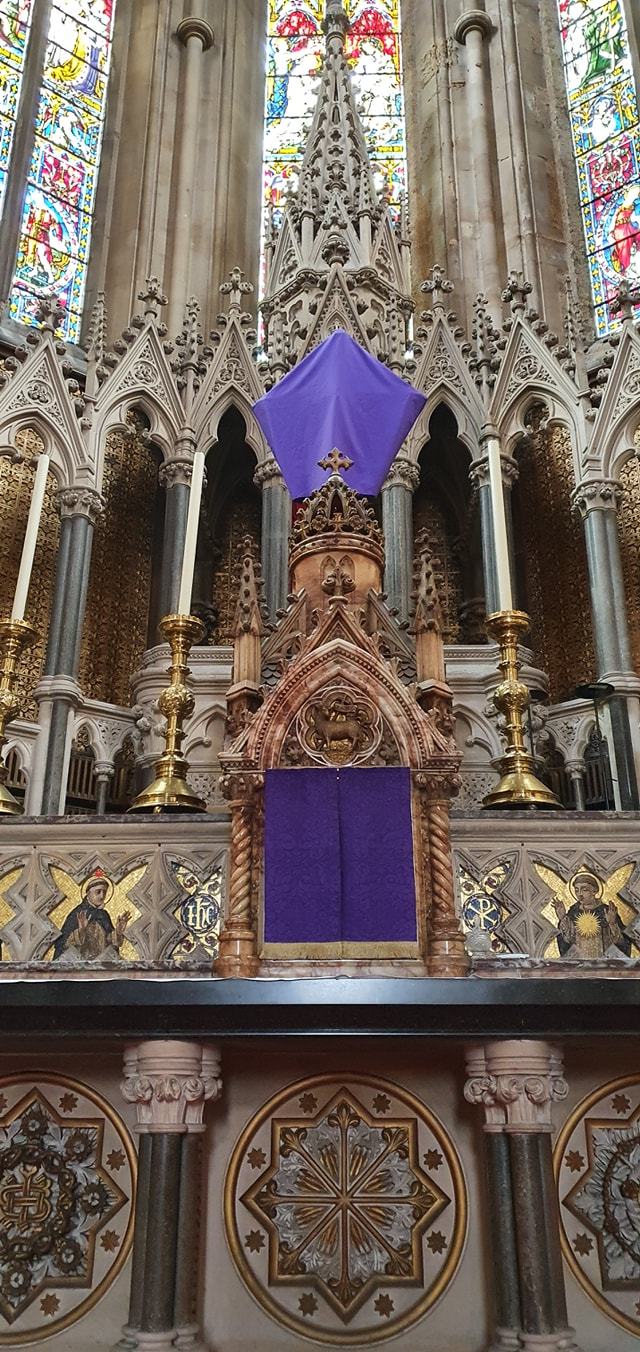
However, because you cannot see, touch, and taste the Eucharistic Lord with your own bodies, something greater is now demanded of you, namely Faith. In his hymn, Adoro Te devote, St Thomas Aquinas thus says: “Sight, touch, taste are all deceived in their judgment of you, but hearing suffices firmly to believe. I believe all that the Son of God has spoken; there is nothing truer than this word of Truth.” Therefore, in this time, as Cardinal Nichols put it, “dig deep” and believe that which the Word of God has promised. Jesus says in John 14: “I will not leave you desolate; I will come to you. Yet a little while, and the world will see me no more, but you will see me; because I live, you will live also. In that day you will know that I am in my Father, and you in me, and I in you… If a man loves me, he will keep my word, and my Father will love him, and we will come to him and make our home with him.” (John 14:18-20, 23) Or, again, as the Lord says in today’s Gospel: “If any one keeps my word, he will never see death.” (Jn 8:51)
So, the Lord, right now and throughout this time of our sufferings is present and alive in your life, and he comes to you where you are, and he gives himself to you if you open yourself to him in love, and prepare a home for him in your heart, if you treasure his Word and keep his commandment of charity. Indeed the Rededication of England to Our Lady today is precisely about this kind of faith. For just as the Lord sought out Mary in her humble abode in Nazareth, and the Word became flesh in her life, and dwelt within her, so the Lord shall also come to our homes, and, if we keep his Word because we love him, he wills to give us himself through grace and so to remain with us, dwelling within us.
Likewise, during this liturgical time of Passiontide, the sight of the crosses and saints in our churches is removed from us. Why? Because we are called to rely not on what we see and touch, but on what we know by faith. Firstly, we know that the Cross stands steady no matter how shaken the world becomes. It is our anchor and our one hope. And secondly, we recall that the Cross, although removed from our sight, is not removed from our lives. Rather, the Cross is to become part of our lives, through the different kinds of sufferings that we each carry day after day, and because we are united to Christ by grace, so the Lord is with us to carry that Cross with us, and to suffer alongside us, and therefore to sanctify us and give us a greater share in his final victory.
This time of Passiontide, therefore, although it is focussed on the sufferings of Our Lord, and the bitter pains he endured because of our sins, is not principally a time to wallow in self-reproach and shame. The Benedictine monk, Dom Pius Parsch, in his classic commentary on the traditional Liturgy, states that the Liturgy does not focus attention upon the human side of the passion as much as upon its goal, our salvation.” So, too, in this time of suffering that is the pandemic, let us remain focussed on the goal of salvation, and, with a living faith, know that in this time of suffering and death, God’s grace is poured out with even greater intensity to sanctify us. Therefore, look steadily ahead at the Cross. As our Holy Father Pope Francis said last Friday: “We have an anchor: by his cross we have been saved. We have a rudder: by his cross we have been redeemed. We have a hope: by his cross we have been healed and embraced so that nothing and no one can separate us from his redeeming love.”
8 notes
·
View notes
Photo

The Solemnity of the Annunciation of the Lord – 25 March
Again Lent’s austerity is interrupted as we solemnly keep a feast in honour of the Annunciation. The Annunciation is a mystery that belongs to the temporal rather than to the sanctoral cycle in the Church’s calendar. For the feast commemorates the most sublime moment in the history of time, the moment when the Second Divine Person of the most Holy Trinity assumed human nature in the womb of the Virgin Mary. Thus it is a feast of our Lord, even as it is of Mary, although the liturgy centres wholly around the Mother of God.
The Church’s Year of Grace, Pius Parsch
youtube
The Annunciation, a tradition which has come down from the apostolic ages, tells us that the great mystery of the Incarnation was achieved on the twenty-fifth day of March. It was at the hour of midnight, when the most holy Virgin was alone and absorbed in prayer, that the Archangel Gabriel appeared before her and asked her, in the name of the blessed Trinity, to consent to become the Mother of God. Let us assist, in spirit, at this wonderful interview between the angel and the Virgin and, at the same time, let us think of that other interview which took place between Eve and the serpent. A holy bishop and martyr of the second century, Saint Irenaeus, who had received the tradition from the very disciples of the apostles, shows us that Nazareth is the counterpart of Eden.

In the garden of delights there is a virgin and an angel and a conversation takes place-between them. At Nazareth a virgin is also addressed by an angel and she answers him but the angel of the earthly paradise is a spirit of darkness and he of Nazareth is a spirit of light. In both instances it is the angel that has the first word. ‘Why,’ said the serpent to Eve, ‘hath God commanded you, that you should not eat of every tree of paradise?’ His question implies impatience and a solicitation to evil, he has contempt for the frail creature to whom he addresses it but he hates the image of God, which is upon her.
See, on the other hand, the angel of light, see with what composure and peacefulness he approaches the Virgin of Nazareth, the new Eve and how respectfully he bows himself down before her: ‘Hail, full of grace! The Lord is with thee! Blessed art thou among women!’ Such language is evidently of heaven, none but an angel could speak thus to Mary.

Scarcely has the wicked spirit finished speaking than Eve casts a longing look at the forbidden fruit, she is impatient to enjoy the independence it is to bring her. She rashly stretches forth her hand, she plucks the fruit, she eats it and death takes possession of her, death of the soul, for sin extinguishes the light of life and death of the body, which being separated from the source of immortality, becomes an object of shame and horror and finally crumbles into dust.
But let us turn away our eyes from this sad spectacle and fix them on Nazareth. Mary has heard the angel’s explanation of the mystery, the will of heaven is made known to her and how grand an honour it is to bring upon her! She, the humble maid of Nazareth, is to have the ineffable happiness of becoming the Mother of God and yet, the treasure of her virginity is to be left to her! Mary bows down before this sovereign will and says to the heavenly messenger: ‘Behold the handmaid of the Lord, be it done to me according to thy word.’

Thus, as the great St Irenaeus and so many of the holy fathers remark, the obedience of the second Eve repaired the disobedience of the first, for no sooner does the Virgin of Nazareth speak her fiat, ‘be it done,’ than the eternal Son of God (who, according to the divine decree, awaited this word) is present, by the operation of the Holy Ghost, in the chaste womb of Mary and there, He begins His human life. A Virgin is a Mother and Mother of Go; and it is this Virgin’s consenting to the divine will, that has made her conceive by the power of the Holy Ghost. This sublime mystery puts between the eternal Word and a mere woman the relations of Son and Mother, it gives to the almighty God a means whereby He may, in a manner worthy of His majesty, triumph over satan, who hitherto seemed to have prevailed against the divine plan.

Never was there a more entire or humiliating defeat than that which this day befell satan. The frail creature, over whom he had so easily triumphed at the beginning of the world, now rises and crushes his proud head. Eve conquers in Mary. God would not choose man for the instrument of His vengeance, the humiliation of satan would not have been great enough and, therefore, she who was the first prey of hell, the first victim of the tempter, is selected to give battle to the enemy. The result of so glorious a triumph, is that Mary, is to be superior not only to the rebel angels but to the whole human race, yea, to all the angels of heaven. Seated on her exalted throne, she, the Mother of God, is to be the Queen of all creation. Satan, in the depths of the abyss, will eternally bewail his having dared to direct his first attack against the woman, for God has now so gloriously avenged her and in heaven, the very Cherubim and Seraphim reverently look up to Mary and deem themselves honoured when she smiles upon them, or employs them in the execution of any of her wishes, for she is the Mother of their God.

Therefore, is it that we, the children of Adam, who have been snatched by Mary’s obedience from the power of hell, solemnise this day of the Annunciation. Well may we say of Mary those words of Debbora, when she sang her song of victory over the enemies of God’s people: ‘The valiant men ceased and rested in Israel, until Debbora arose, a mother arose in Israel. The Lord chose new wars, and He Himself overthrew the gates of the enemies.” Let us also refer to the holy Mother of Jesus these words of Judith, who by her victory over the enemy was another type of Mary: ‘Praise ye the Lord our God, who hath not forsaken them that hope in Him. And by me, His handmaid, He hath fulfilled His mercy, which He promised to the house of Israel and He hath killed the enemy of His people by my hand this night. . . . The almighty Lord hath struck him, and hath delivered him into the hands of a woman, and hath slain him.’
–Excerpted from The Liturgical Year, Abbot Gueranger OSB

23 notes
·
View notes
Text
Findings in various levels of myelomeningocele
what is interesting is that myelomeningocele helped a lot in the study of the nerve root muscle supply by two means: first it gives a unique opportunity for stimulation of motor nerve roots and second to study of motor root lesions.
at least 50% of nerve supply to an individual muscle must be lost before clinical paralysis can be detected
infants born with myelomeningocele and treated conservatively are liable to remain paralyzed or become increasingly paralyzed. among the factors responsible for this deterioration may be traction exerted on the nerve roots passing from the plaque of spinal cord to the intervertebral foramina when the MM sac fools up with cerebrospinal fluid during the first week of life and the caudal roots tend to be more severely affected.
so lets go back to the title of this article, findings in various levels of myelomeningocele.
paralysis below T12: complete paralysis of lower limbs
paralysis below L1: weak to moderate hip flexion + weak sartorius = hip flexion and external rotation

paralysis below L2: strong hip flexion + moderate hip adduction = hip flexion and adduction

paralysis below L3: normal hip flexion + normal hip adduction + normal knee extension = hip flexion and adduction and knee extension
paralysis below L4: normal hip flexion + normal hip adduction + some hip abduction in flexion + normal knee extension + strong dorsiflexion and inversion = flexion and adduction and external rotation of hip + recurvatum of knee + calcaneo-varus foot
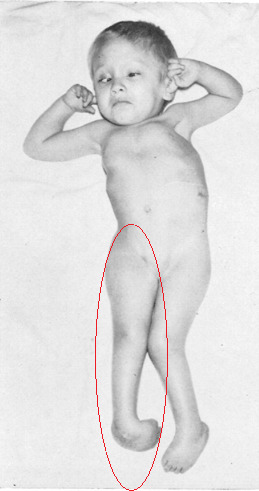

paralysis below L5: normal hip flexion + normal hip adduction + moderate abduction + no hip extension + normal knee extension + moderate knee flexion + normal inversion + moderate eversion + strong dorsiflexion + no planterflexion = hip flexion without adduction or abduction + semi-flexed knee + foot calcaneus

paralysis below S1: normal hip flexion + normal hip adduction + normal hip abduction + moderate hip extension + normal hip internal and external rotation + strong knee flexion + normal dorsiflexion + normal inversion + normal eversion+ moderate planterflexion + normal toes extension + strong great toe flexion + no foot intrinsic muscles (except abductor hallucis + flexor hallucis brevis) + weak flexor digitorum longus = clawing of toes and flattening of the skin of the sole of the foot

paralysis below S2: weak intrinsic muscles of foot = at clinical examination it is difficult to detect any abnormality but, with growth development of clawing of the toes.
so this study came with a conclusion regarding the innervation of muscles of the lower limbs

but newer studies using direct intraoperative nerve root stimulations during decompressive surgery concluded that a significant number of roots innervate a broader range of muscles than expected.
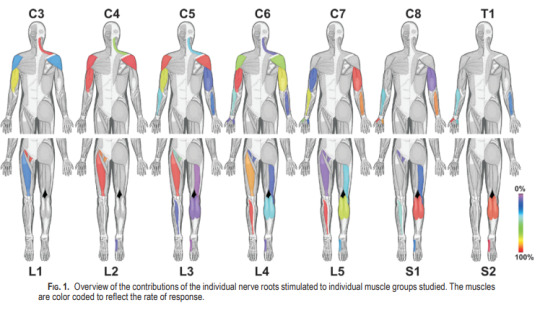
this table summarizes the neurological findings in MM
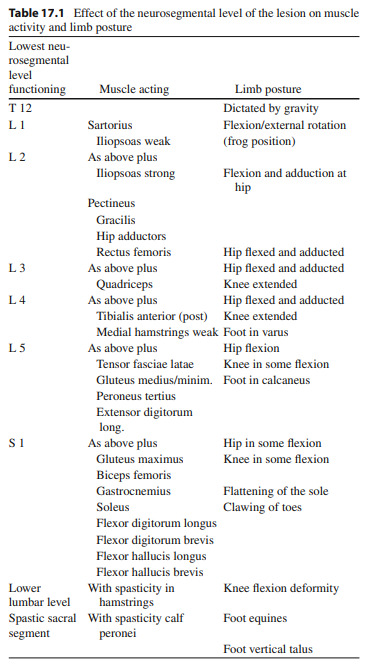
References: (1) SHARRARD WJ. THE SEGMENTAL INNERVATION OF THE LOWER LIMB MUSCLES IN MAN. Ann R Coll Surg Engl. 1964 Aug;35(2):106-22. PMID: 14180405; PMCID: PMC2311748. (2) Schirmer CM, Shils JL, Arle JE, Cosgrove GR, Dempsey PK, Tarlov E, Kim S, Martin CJ, Feltz C, Moul M, Magge S. Heuristic map of myotomal innervation in humans using direct intraoperative nerve root stimulation. J Neurosurg Spine. 2011 Jul;15(1):64-70. doi: 10.3171/2011.2.SPINE1068. Epub 2011 Apr 8. PMID: 21476796. (3) Graham, H. K., & Parsch, K. (2009). Neural Tube Defects, Spina Bifida, and Spinal Dysraphism. Children’s Orthopaedics and Fractures, 265–286. doi:10.1007/978-1-84882-611-3_17
0 notes
Text
The Assumption Of The Virgin Mary Reveals Our Future
The Assumption Of The Virgin Mary Reveals Our Future
The Assumption – August 15 Now toward the end of the summer season, at a time when fruits are ripe in the gardens and fields, the Church celebrates the most glorious “harvest festival” in the Communion of Saints. Mary, the supremely blessed one among women, Mary, the most precious fruit which has ripened in the fields of God’s kingdom, is today taken into the granary of heaven. —Pius Parsch, The…

View On WordPress
0 notes
Text
Fwd: Conference: Online.FrontiersOfPopGenetics.May11
Begin forwarded message: > From: [email protected] > Subject: Conference: Online.FrontiersOfPopGenetics.May11 > Date: 5 May 2022 at 06:36:16 BST > To: [email protected] > > > Dear colleagues, > > you are cordially invited to tune in to a hybrid Mini-Symposium organised > by the Vienna Graduate School of Population Genetics: > > *Frontiers of Population Genetics V* > *May 11, 2022* > *14:00 - 17:30 CEST* > > *Sign up for zoom link: *https://ift.tt/xo3pj5S > > 14:00 Opening remarks > > *14:05-14:50 John Parsch ' LMU M�nchen*"The maintenance of gene regulatory > polymorphism in Drosophila." > > *14:50-15:35 Virginie Courtier-Orgogozo ' Univ. Paris Diderot, > FR*"Evolution of Drosophila glue" > > 15:35-16:00 break > > *16:00-16:45 Nick Barton ' IST Austria*"Understanding haplotypes" > > *16:45-17:30 Andrew Clark ' Cornell Univ.*"Multi-generation genome-wide > allele frequency dynamics in a wild, collapsing population" > > -- > Dr. Julia Hosp > > Vienna Graduate School of Population Genetics > Coordinator > > www.popgen-vienna.at > https://twitter.com/PopGenViennaPhD > > c/o > Institut f�r Mathematik, Universit�t Wien > & Institut f�r Populationsgenetik, Veterin�rmedizinische Universit�t Wien > > T +43 1 25077 4302 > > Julia Hosp > via IFTTT
0 notes